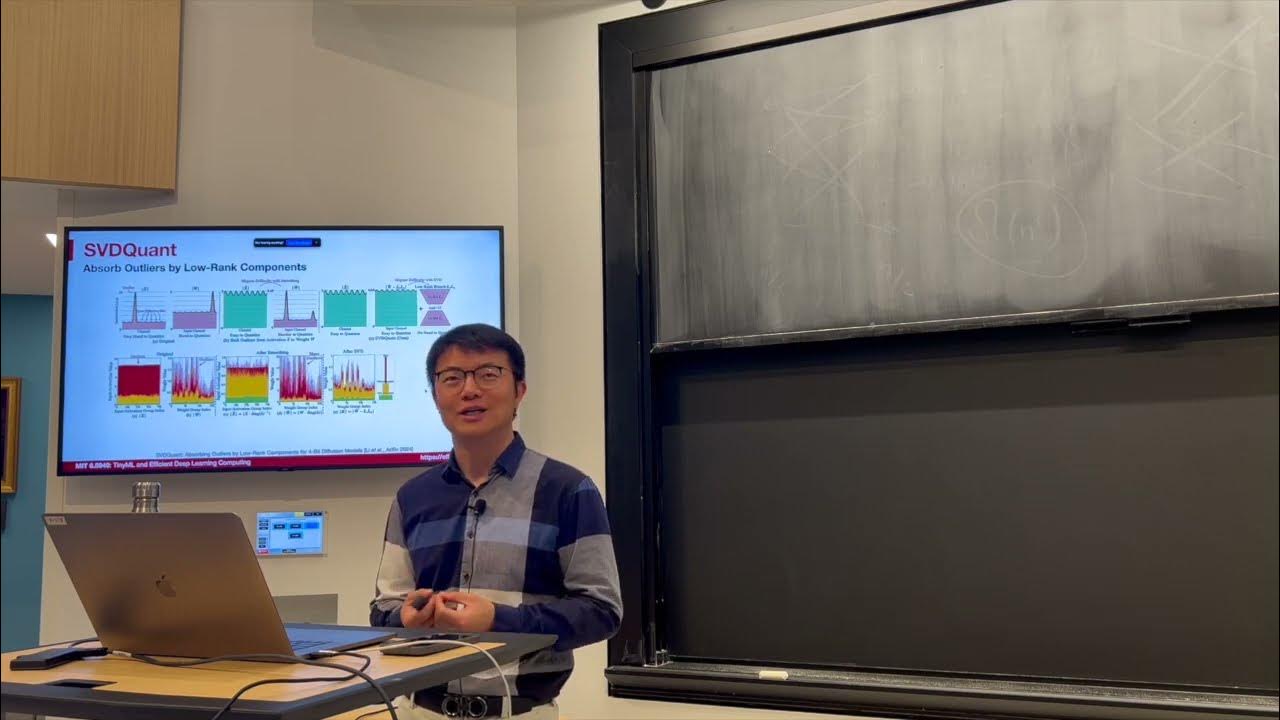Comparing Quantizations of the Same Model - Ollama Course
Summary
TLDRThis video script from the Ollama course explores the impact of quantization on AI model performance. It compares different quantization levels, including fp16 and 2-bit, on response quality and speed using the llama3.1 model. The creator demonstrates a tool for evaluating model outputs and emphasizes the importance of testing with relevant questions. The video concludes by advising viewers to use the smallest model size and quantization that meets their needs for consistency and efficiency.
Takeaways
- 🔍 The video discusses different quantization variants of the llama3.1 AI model and their performance when answering questions.
- 📚 The Ollama course is a free educational resource on YouTube that teaches how to use Ollama for AI models locally.
- 📈 The script compares quantization options like 2-bit, 4-bit, and 16-bit floating point (fp16) and their impact on model performance.
- 🗨️ The creator of the video has developed a program to test different quantization variants of a model with the same prompt to assess their answers.
- 💻 The video mentions that the 2-bit quantization can produce answers quickly, suggesting that lower quantization can be surprisingly effective.
- ⏱️ Response times for the model variants are noted, with the 2-bit variant being the fastest, followed by 4-bit, and then fp16 being the slowest.
- 🤖 The video suggests that without labels, it might be difficult to distinguish between the answers produced by different quantization levels.
- 🧐 The script highlights the importance of testing AI models with the specific types of questions one intends to ask, as performance can vary.
- 🛠️ The video touches on function and tool calling with AI models, mentioning that there are different procedures for this, with varying levels of success.
- 📝 The importance of using the smallest parameter size and quantization that provides good results is emphasized to optimize for speed and efficiency.
- 🔄 The video advises to always pull the latest versions of models and software to ensure the best performance and environment for testing.
Q & A
What is the main topic of the video script?
-The main topic of the video script is exploring the differences between various quantization variants of the llama3.1 model using Ollama, and how they perform when answering questions.
What is Ollama and what does it offer?
-Ollama is a platform that provides a free course to teach users how to run artificial intelligence models locally on their devices or in the cloud.
What is the purpose of the program created in the script?
-The program allows users to select a model, enter a prompt, and then test how different quantizations of that model perform with the given prompt.
Why is it important to ask the same question multiple times to a model?
-It is important to ask the same question multiple times to assess the model's consistency and reliability in providing answers.
What does the script suggest about the 4-bit quantization of models?
-The script suggests that while some people may find the 4-bit quantization of models to be useless, in most cases, it is likely to be more than adequate for most needs.
How can one find the code for the program mentioned in the script?
-The code for the program can be found in the 'videoprojects' repo on the GitHub profile 'technovangelist', specifically in the folder '2024-08-20-quant-tester'.
What is the significance of the fp16 model in the script's context?
-The fp16 model is used as a comparison point to the quantized models, with the script suggesting that without labels, it's difficult to distinguish the quality of answers between fp16 and quantized models.
What is the script's stance on using higher quantizations for function calling?
-The script mentions that some people believe higher quantizations are needed for function calling, but it also states that the new procedure for tool calling is not necessarily better than the old way yet.
What is the script's advice on choosing a model and quantization for use?
-The script advises to use the smallest parameter size and smallest quantization that provides consistently good results, and to test the models with questions that are relevant to the user's needs.
How does the script address the issue of model updates?
-The script emphasizes the importance of regularly pulling the latest versions of the models and Ollama to ensure the best testing environment.
Outlines

このセクションは有料ユーザー限定です。 アクセスするには、アップグレードをお願いします。
今すぐアップグレードMindmap

このセクションは有料ユーザー限定です。 アクセスするには、アップグレードをお願いします。
今すぐアップグレードKeywords

このセクションは有料ユーザー限定です。 アクセスするには、アップグレードをお願いします。
今すぐアップグレードHighlights

このセクションは有料ユーザー限定です。 アクセスするには、アップグレードをお願いします。
今すぐアップグレードTranscripts

このセクションは有料ユーザー限定です。 アクセスするには、アップグレードをお願いします。
今すぐアップグレード関連動画をさらに表示

DeepSeek on Apple Silicon in depth | 4 MacBooks Tested

Quantization: How LLMs survive in low precision

Optimize Your AI - Quantization Explained

EfficientML.ai Lecture 1 - Introduction (MIT 6.5940, Fall 2024)

EfficientML.ai 2024 | Introduction to SVDQuant for 4-bit Diffusion Models

Install Mem0 with Ollama Locally - A Hands-on Tutorial
5.0 / 5 (0 votes)
